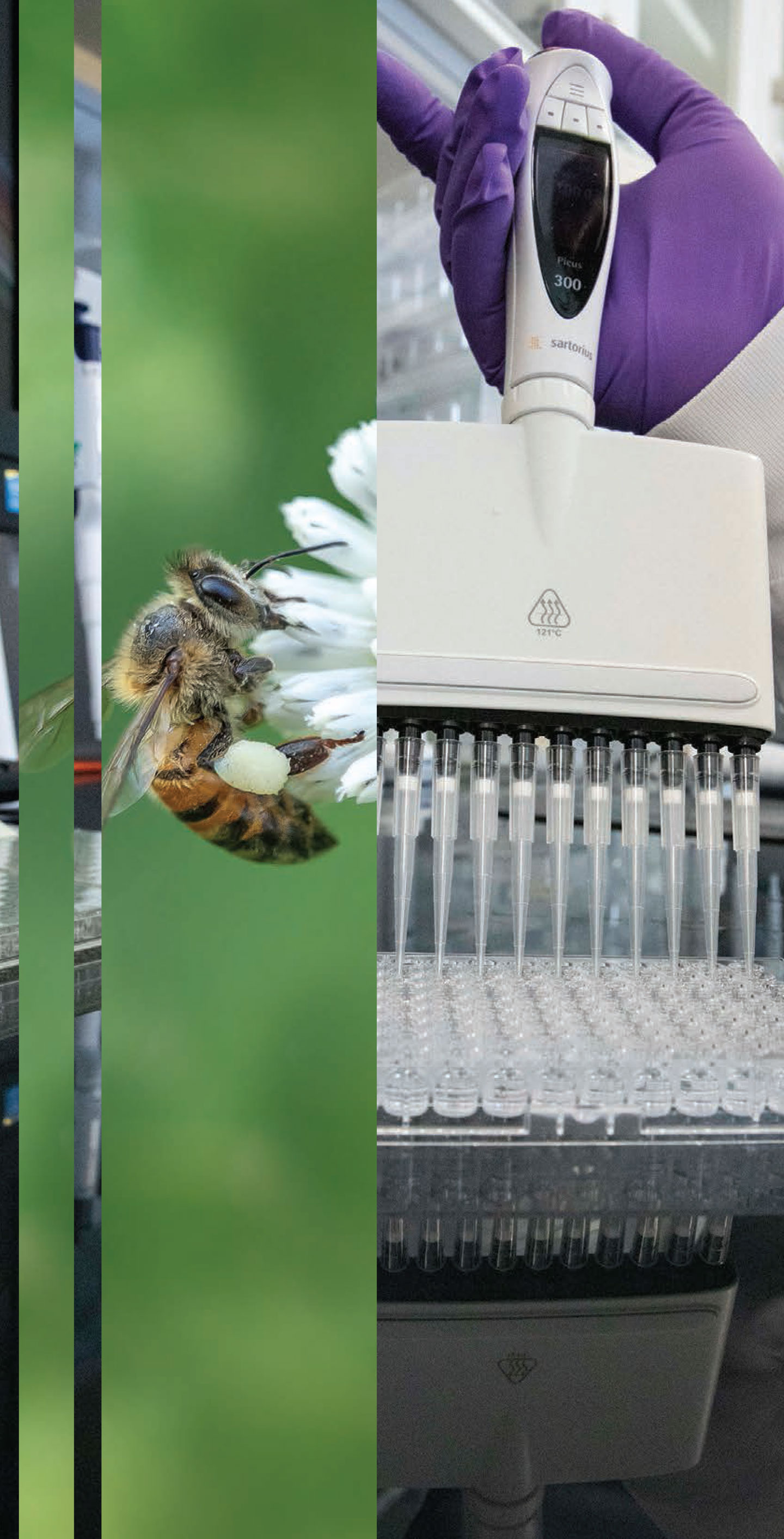From nature to high quality AIT solutions
At Stallergenes Greer, we have more than 100 years of experience in the field of allergies and allergen immunotherapy. Our large range of allergen extracts are derived from natural sources (pollens, grasses, house dust mites, venoms, etc.) using state-of-the-art technologies to provide patients with high quality allergen immunotherapy treatments adapted to their needs and profile.
Working with nature
We are committed to providing patients with high quality allergen immunotherapy products. To achieve this, we have adopted an integrated approach to the sourcing of our raw materials, the production of our treatments and their distribution. Prior to the extraction of the allergens, we select and harvest the raw material which guarantees both the quality and the reproducibility of the allergenic extracts.
For house dust mites, for example, we grow the two key species responsible for allergies: Dermatophagoides farinae (American house dust mite) and Dermatophagoides pteronyssinus (European house dust mite) at our Antony (France) site. The mites are grown on a nutrient medium, Stalmite APF®, which contains no animal and/or human-derived material thus preventing any risk of transmission of pathogenic transmissible agents, using a process that retains both the bodies and faeces of the mite. This ensures that our extract mimics natural exposure to the allergen. Growth conditions are strictly controlled to ensure consistency and quality of these products (e.g. kinetics and metabolism).
For grass, we grow five species of grasses (sweet vernal, orchard, perennial rye, timothy, Kentucky blue grass) on 90 hectares of land in Amilly (France). These grasses represent many of the natural exposure and sensitisation conditions of grass-pollen allergic patients. The pollen is harvested using specifically designed combines equipped with a patented vacuum harvesting system. The harvesting technique and post-harvesting
processes ensure that the source material consists of mature pollen grains and that all the targeted allergens are obtained. The pollen is purified on site before being transferred to our Antony (France) facility. In the U.S., our facility in Mathiston, Mississippi, grows harvests and collects over 75 different types of pollen on more than 56 hectares of land.
For mould, the mycology department in Lenoir (North Carolina, U.S.) prepares fungi, and only fungi, for extraction. Unlike allergens obtained from external sources, fungi from Stallergenes Greer are grown entirely in our North Carolina facility from authenticated cultures. They are cultured on specific growth media under strictly controlled conditions to ensure quality and consistency. The mycology department can grow more than 60 different fungal cultures. To assure long-term supply and safety stock, we maintain stock cultures of our moulds, stored as either oil overlays or lyophilised plugs.
Allergen characterisation
The characterisation of allergen extracts notably aims to identify the allergen’s molecular structure, IgE binding properties and its allergenic potency. Extracts are characterised using highly advanced analytical technologies. These technologies allow both a precise quantification of the composition of our products and intermediates at all stages of the process as well as the molecular physico-chemical integrity of personalised allergen preparations. Quality control is carried out at every stage of the process, from the arrival of the source materials through the various production stages to the market release of the finished personalised product.
1. Moingeon P, et al. Clin Exp Allergy Rev 2008;8:12–4

